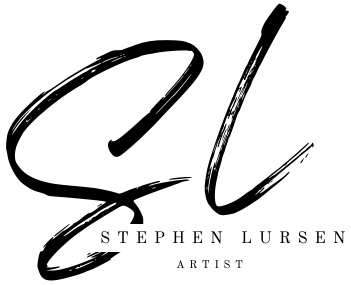Today you will illustrate your first illustration from your storybook. Remember, you may do as many illustrations as you like within your book. The minimum is 2 illustration pages, per person.
Let's start by evaluating your storyboard page from your first passage of text. This should already be complete by now. If not, go back to the storyboard assignment and complete it first, then move forward to this step. Looking at your complete storyboard page of three design options, think about which design best communicates the feeling and event from the selected passage. Now that you have a clear idea of how you want to illustrate your first section of the text, carefully and lightly draw your illustration with a pencil. Erase mistakes as necessary but draw relatively lightly so as to make erasing easy. Don't shade your design with a pencil, just use outlines/contour lines. After your line drawings are finished, it should look like a coloring book page - with NO shading or coloring. After your pencil illustration is complete, trace over it with a black fine tip pen. Scanners don't read pencil properly because graphite (pencil lead) is reflective and scans intermittently.
Once your design is fully traced with a black ink pen, please scan it. If you don't own a scanner, I highly recommend downloading the free App called HP SMART. Use the camera scan button and in a well-lit area (ensure no shadows are being cast across your page, scan your page and save it out to your files. Then email or transfer the scanned image from your phone to your laptop/computer.
If you haven't already, please download Gimp for free. You may colorize your line art design in Gimp. Please watch my short video where I explain why and how you work using this method.
The video above is not a step by step guide. Rather an example of taking an ink line drawing and colorizing it digitally. Once you're finished colorizing your illustration digitally, make sure your page/image size is the size of your book, in most cases 8.5" x 11". Export/save your final image out as a PDF with the page number in the file name. For instance, your second-page illustration would be saved out as "Page 2.pdf" to a new folder created just to organize your book pages.
Your illustrations must have an inspirational source (style, illustrator, and/or book) to make sure your group makes a unified book where every page looks like it was done with one vision in mind. Copy and Paste this inspiration image into your shared google doc (story), for everyone to reference throughout the production process.
If you haven’t found an inspirational source of any kind, then you may use the first 10 minutes of class to find one. I recommend google image searching “Best Children’s Book illustrations” -or- “Best Illustrators” -or- “Award-winning illustrators” and you will quickly see a wide range of quality examples of professional illustrations you can emulate.
***Make sure your group is in agreement about the orientation of the pages. Everyone needs to create a portrait or landscape orientation to prevent half of your book having to be remade.
In this illustration process, if you have an inspirational illustrator, then you must emulate your inspirational illustrator’s method. This can include, but is not limited to:
- Pencil and ink on paper
- Colored pencil on paper
- Marker on paper
- Watercolor on watercolor paper (ask me for watercolor paper)
- Collage on poster board or matte board (ask me for heavy boards)
- Digital Photography based illustrations as jpegs imported in Gimp to edit [This method must be done as homework as you will not be permitted to go outside or wander to take pictures while at school. If you chose this method, then you must use your class time to thoroughly rewrite your story, divide the pages, and plan your illustrative photos with specific ideas to set yourself up for success when out of class. You may not illustrate your book with another photographer’s photos. This will disqualify your book from grading and is in violation of the project guidelines]
- Digital art illustrations are hand-drawn, scanned, and then colorized in Gimp 2.10 [If you’re creating a digital illustration from scratch, then you must start off by going to “File” then to “New”, then create new document 8.5”x11” at 300 dpi.]
- Any other medium or mixed media work is possible and will simply need to be scanned or photographed to digitize the final product.
Please complete all your illustrations following a consistent method to ensure unity and harmony among the pages of your book. Every page needs to be the same size, DPI (300 dots per inch), and quality. Every page of the book will ultimately need to be created digitally and saved/exported out as a PDF file with the page number as the file name. When saving, use the page number, for instance, "Page01.pdf" then "Page02.pdf" and so on...
Please feel free to reply to this post with any questions or comments. Thank you!
Spotlight student work in this post: Alyson Smith, author, artist, musician, and instructor.
